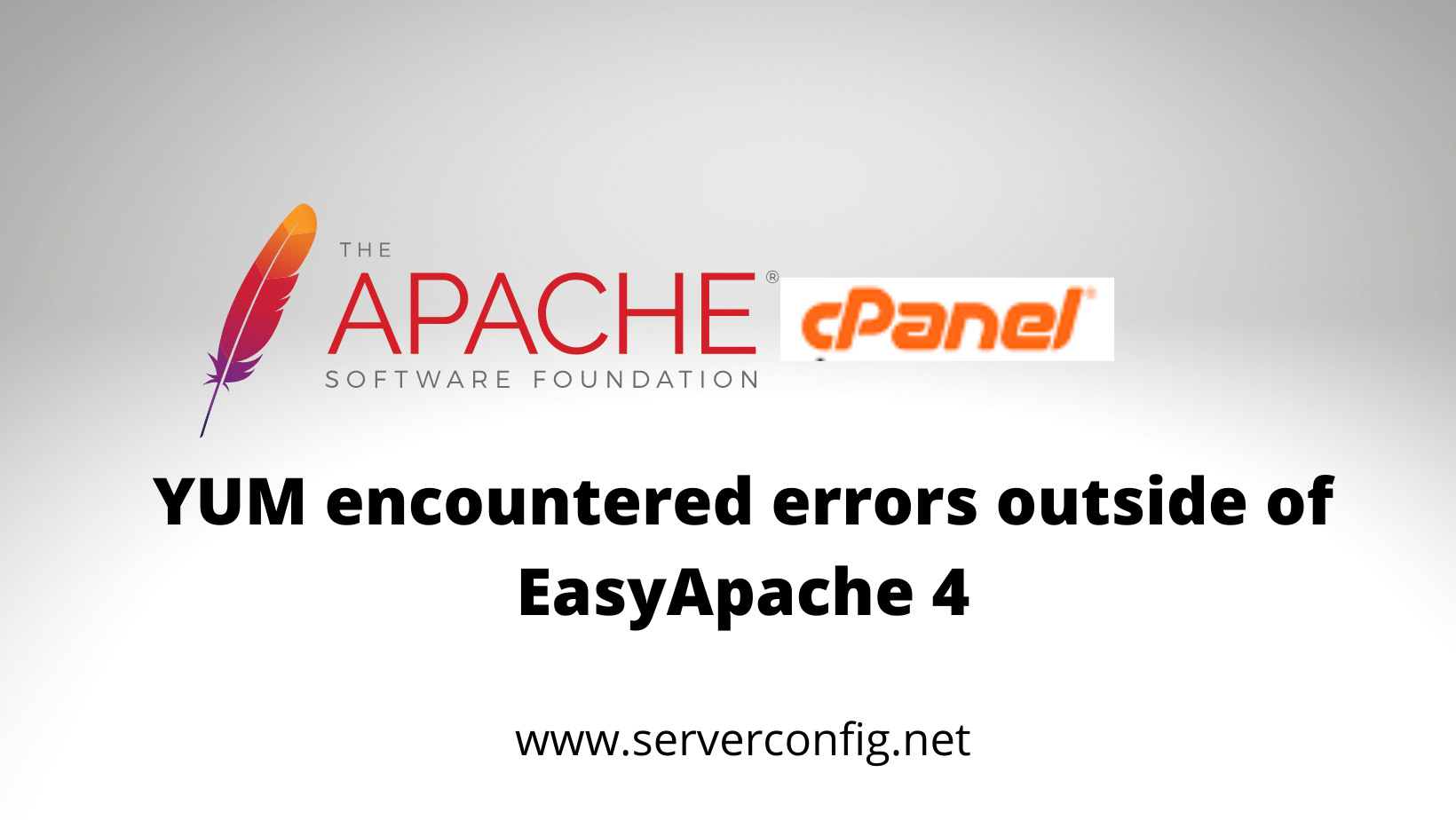Introduction :
Welcome to our comprehensive guide on troubleshooting YUM errors outside of EasyApache 4. YUM, a package manager for Linux systems, is crucial for installing and managing software packages. When YUM encounters errors, it can disrupt your server’s functionality. In this article, we will provide step-by-step instructions on how to troubleshoot and resolve YUM errors that occur outside of EasyApache 4. By the end of this guide, you will have the knowledge to effectively address YUM errors, ensuring your server’s smooth operation.
- Introduction to Troubleshooting YUM Errors:
Troubleshooting YUM errors outside of EasyApache 4 is essential for maintaining the functionality of your Linux server. This comprehensive guide aims to provide you with step-by-step instructions on how to effectively address YUM errors that may arise during package management. - Understanding Common YUM Errors:
Before we dive into troubleshooting, let’s gain an understanding of some common YUM errors that can affect your server’s performance and stability. - Prerequisites:
Ensure you have the following prerequisites in place before proceeding:
- Access to a Linux server with administrative privileges.
- Basic knowledge of Linux commands and package management.
- Familiarity with the YUM package manager.
- Troubleshooting and Solutions:
Explore detailed troubleshooting steps and solutions to address YUM errors outside of EasyApache 4:
4.1. Checking YUM Repository Configuration:
Learn how to verify and correct YUM repository configurations to ensure proper package installation and updates.
4.2. Resolving Dependency Issues:
Discover methods for resolving dependency issues that may prevent the installation or update of packages through YUM.
4.3. Clearing YUM Cache:
Understand the importance of clearing the YUM cache and how to perform this operation to resolve issues related to outdated package information.
4.4. Fixing Corrupted Packages:
Learn how to identify and repair corrupted packages that can lead to YUM errors and compromised server performance.
- Testing and Verification:
After implementing the recommended solutions, perform testing and verification to ensure that YUM errors have been successfully resolved, and your server functions correctly. - SEO Optimization Tips:
To optimize this article for SEO, consider the following tips:
- Use relevant keywords: Include keywords related to YUM troubleshooting, Linux server errors, package management, and error resolution naturally throughout the article.
- Structured content: Organize the article using headers, subheaders, and bullet points for easy readability and SEO indexing.
- Internal and external links: Include links to related articles or resources to enhance the article’s credibility and provide additional information to readers.
- Mobile optimization: Ensure that the article is mobile-friendly, as mobile responsiveness is crucial for SEO rankings.
- High-quality images: Utilize relevant images with descriptive alt text to enhance visual appeal and SEO performance.
- Keyword-rich meta tags: Create a compelling meta title and description incorporating key phrases related to troubleshooting YUM errors outside of EasyApache 4.
- Content length: Aim for a word count exceeding 1500 words to provide comprehensive information and improve SEO rankings.
- Frequently Asked Questions (FAQs):
Address common questions users might have about troubleshooting YUM errors outside of EasyApache 4 to assist in their understanding of the fixes. - Conclusion:
By following the steps outlined in this comprehensive guide, you can effectively troubleshoot and resolve YUM errors that occur outside of EasyApache 4. Ensuring the smooth operation of your server’s package management is essential for maintaining optimal server performance and stability.
